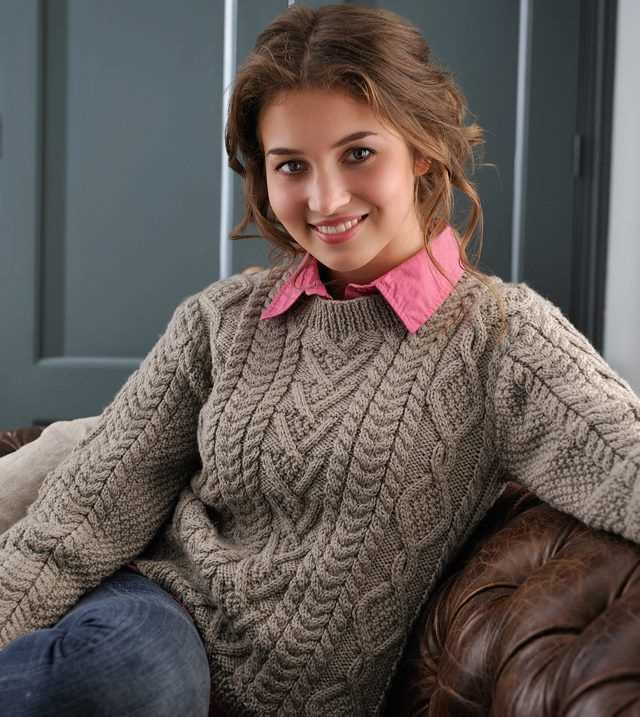
Aran knitting is a traditional Irish style of knitting that originated in the Aran Islands off the west coast of Ireland. It is characterized by its intricate and highly textured patterns, which often include cables, bobbles, and diamond motifs. Aran knitting gained popularity in the early 20th century and has since become a beloved knitting tradition that is cherished by knitters around the world.
One of the most distinctive features of Aran knitting is the use of cables. Cables are created by crossing stitches over each other, resulting in a raised and three-dimensional design. These intricate cable patterns often have symbolic meanings, with each pattern representing a different aspect of life on the Aran Islands. For example, the diamond pattern is said to represent the patchwork fields of the islands, while the honeycomb pattern is said to symbolize the hardworking bees and the rewards of their labor.
Aran knitting patterns are not only visually stunning, but they are also highly functional. The thick, textured fabric created by these patterns is perfect for keeping you warm in cold weather. Additionally, the intricate designs add a touch of elegance and sophistication to any garment or accessory. Whether you are knitting a cozy sweater, a warm hat, or a beautiful blanket, Aran knitting patterns are sure to impress.
Today, Aran knitting patterns are widely available in various books, magazines, and online resources. They have also inspired countless designers to create their own unique interpretations of this timeless style. Whether you are a seasoned knitter or just starting out, exploring the world of Aran knitting is a wonderful way to connect with the rich history and tradition of this beautiful craft.
What is Aran knitting?
Aran knitting is a traditional style of knitting that originated in the Aran Islands, off the west coast of Ireland. It is characterized by its intricate and highly textured patterns, which are often made using various combinations of stitches such as cables, twisted stitches, and bobbles.
One of the key features of Aran knitting is its use of symbolism in the patterns. Each stitch and pattern element has a specific meaning, often related to the life and history of the islanders. For example, cables might represent the ropes used by fishermen, while diamond patterns could symbolize a wish for wealth and success.
History of Aran knitting
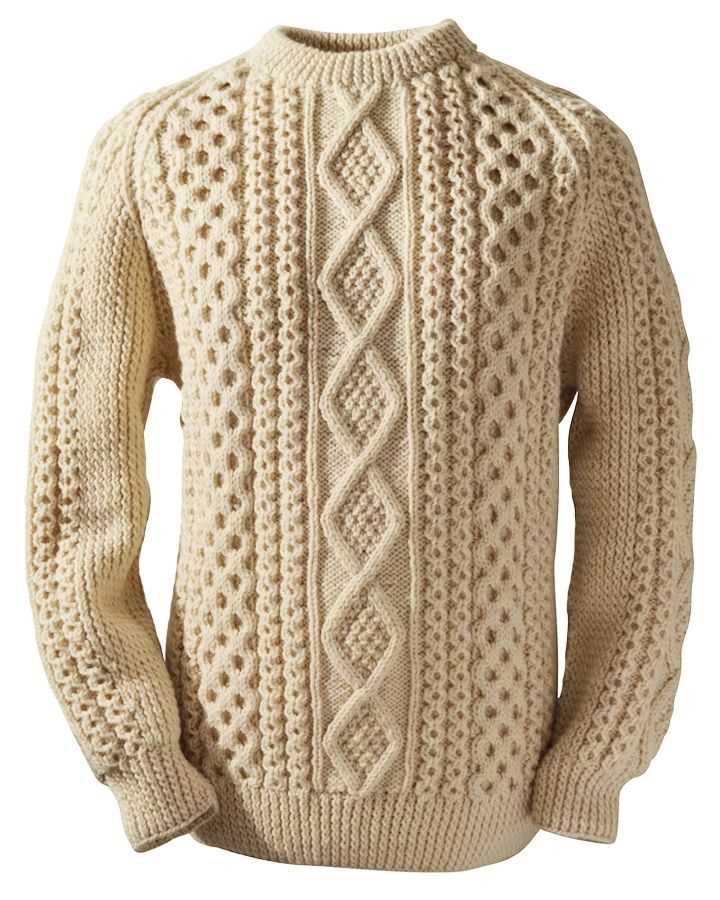
Aran knitting has a rich history that dates back centuries. It is believed to have been developed by the women of the Aran Islands to provide warm and durable garments for their families to wear in the harsh Atlantic conditions. The patterns were passed down through generations, with each family having its own unique designs.
In the early 20th century, Aran knitting gained popularity beyond the islands as it was showcased in fashion magazines and worn by celebrities. Today, it is still a beloved style of knitting that is admired for its intricate beauty and cultural significance.
Characteristics of Aran knitting
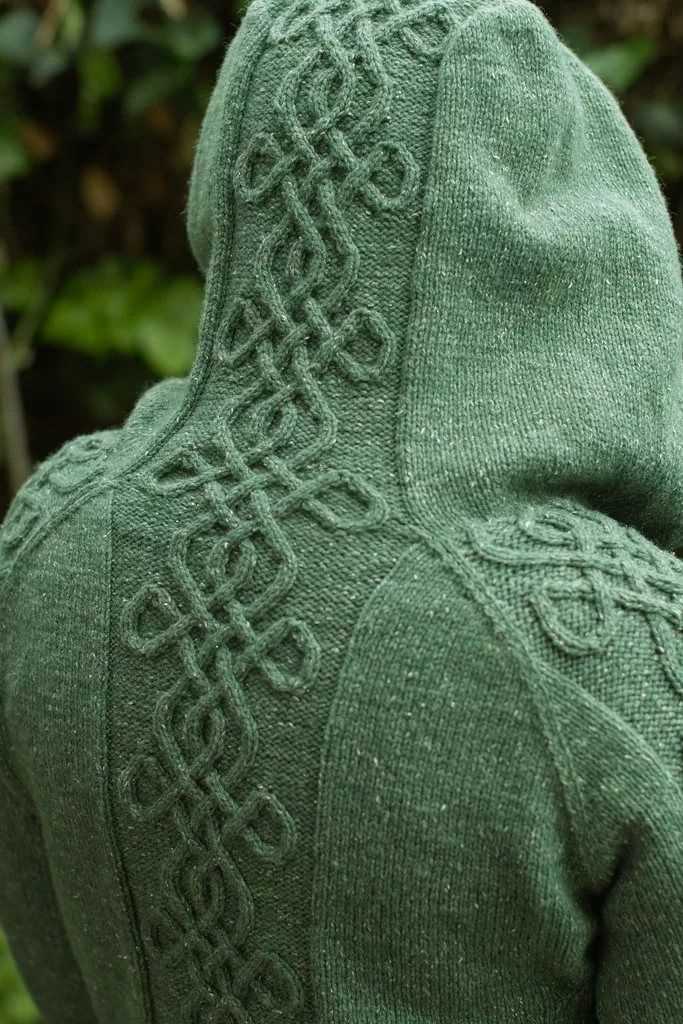
- Highly textured patterns
- Cables, twisted stitches, and bobbles
- Symbolism and meaning in the patterns
- Warm and durable garments
- Passed down through generations
- Popularized in the early 20th century
If you’re interested in trying your hand at Aran knitting, there are many patterns available that range from simple and beginner-friendly to more complex and challenging. Whether you’re knitting a sweater, hat, or blanket, you can create a beautiful and meaningful piece with this timeless Irish tradition.
History of Aran knitting
Aran knitting is a traditional style of knitting that originated from the Aran Islands, a group of islands located off the west coast of Ireland. The history of Aran knitting can be traced back to the early 20th century, when the islanders began using their knitting skills to create warm and durable garments to protect themselves from the harsh weather conditions.
One of the distinguishing features of Aran knitting is its intricate cable patterns, which are created by twisting and crossing different stitches. These cable patterns not only add visual interest to the garments, but also provide additional warmth by trapping air in the knitted fabric.
Each Aran knitting pattern tells a story, with different stitches and motifs representing different aspects of island life. For example, the honeycomb stitch symbolizes the hardworking bees and the rewards of labor, while the cable stitch represents the rugged ropes used by fishermen. The diamond stitch is said to bring good luck and wealth, while the zigzag stitch represents the winding paths of the island’s cliffs.
Over the years, Aran knitting has gained popularity worldwide, with its unique patterns and rich cultural heritage appealing to knitters and fashion enthusiasts alike. Today, many designers and knitters continue to create and explore new variations of Aran knitting patterns, keeping the tradition alive and bringing the beauty of the Aran Islands to people around the world.
Key features of Aran style knitting
The Aran style of knitting originated on the Aran Islands off the coast of Ireland. This style of knitting is known for its unique patterns and intricate designs, making it a popular choice for those looking to create beautiful and textured garments.
One of the key features of Aran style knitting is the use of cable stitches. Cable stitches create a raised pattern that resembles twisted ropes or cables, giving the finished piece a rich and three-dimensional look. These cable stitches can be combined in various ways to create intricate and complex designs, making each Aran garment truly one-of-a-kind.
- Another distinctive feature of Aran style knitting is the use of traditional Celtic motifs. These motifs often include symbols such as knots, diamonds, and honeycomb patterns, which are inspired by the rich heritage and history of the Celtic people. These motifs add a touch of cultural significance to the Aran knitted garments.
- Additionally, Aran style knitting is known for its use of natural fibres, such as wool or cotton. These fibres not only provide warmth and comfort but also enhance the overall texture and appearance of the knitted piece. The choice of natural fibres also reflects the traditional craftsmanship and sustainability of the Aran style.
- Aran style knitting patterns also commonly include textured stitches, such as moss stitch and seed stitch. These stitches add depth and interest to the knitted fabric and can be used to create areas of contrast within the overall design.
In conclusion, Aran style knitting stands out for its use of cable stitches, traditional Celtic motifs, natural fibres, and textured stitches. These key features contribute to the unique and timeless appeal of Aran knitted garments, making them a cherished addition to any wardrobe.
Types of Aran patterns
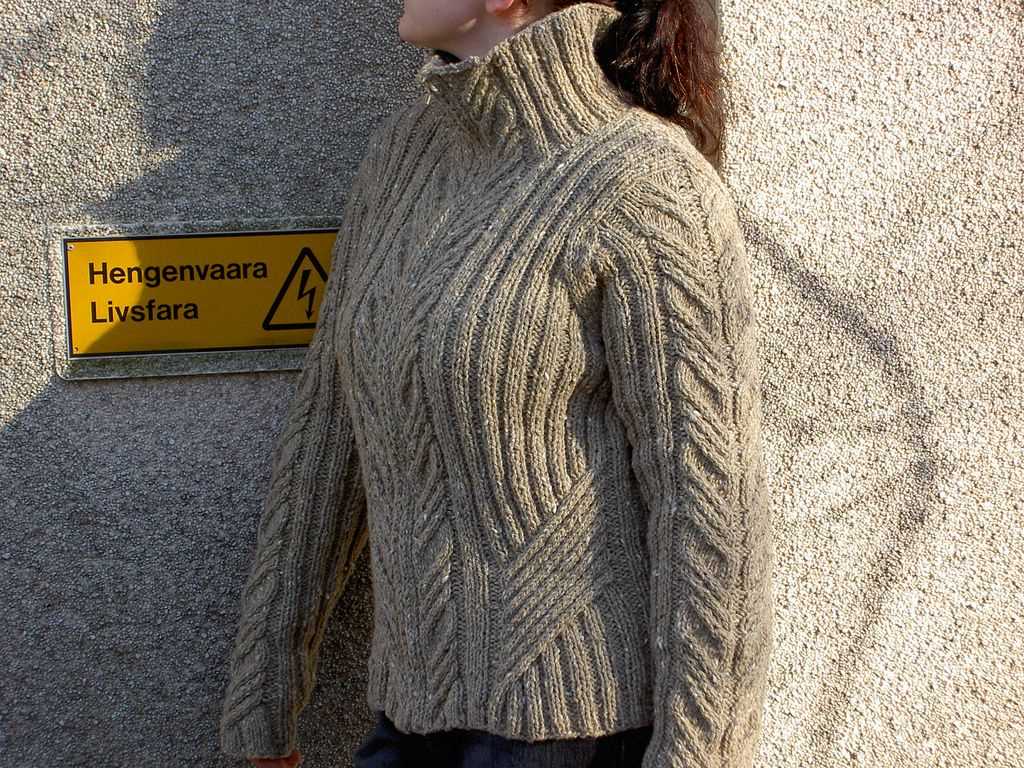
Aran patterns are a traditional style of knitting that originated in the Aran Islands off the coast of Ireland. These patterns are characterized by their intricate cable stitches and rich textures, making them a popular choice for sweaters, scarves, and other cozy accessories.
There are several types of Aran patterns, each with its own unique design elements. One common type is the diamond pattern, which features rows of interlocking diamond shapes created by crossing stitches over each other. This pattern is often used to symbolize the rugged landscape and rich heritage of the Aran Islands.
Cable patterns
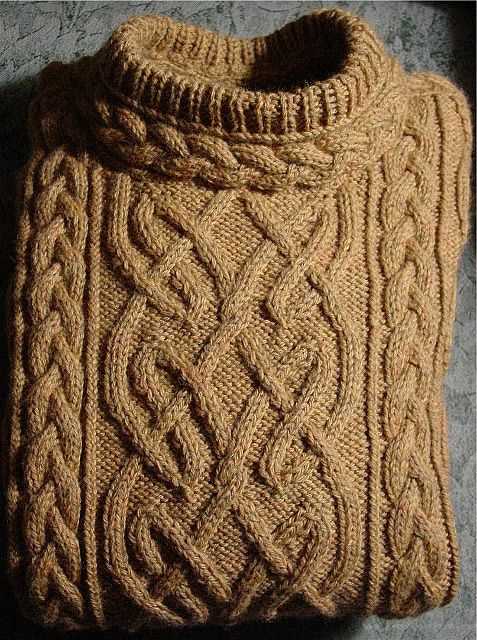
Cable patterns are another popular type of Aran pattern. These patterns feature various types of cables, which are created by crossing stitches over each other to create a twisted or braided effect. Common cable patterns include the honeycomb cable, the horseshoe cable, and the braid cable. These patterns add depth and dimension to knitted garments, giving them a classic and timeless look.
Seed stitch and basketweave patterns
Seed stitch is a textured pattern often used in Aran knitting. It is created by alternating knit and purl stitches to create a bumpy texture that resembles seed or grain. This pattern is often used as a border or as a contrast to other cable patterns.
Another popular type of Aran pattern is the basketweave pattern. This pattern resembles the woven texture of a basket and is created by alternating panels of knit and purl stitches in a checkerboard pattern. This pattern adds a touch of rustic charm to knitted garments and is often used for blankets and home decor items.
Aran lace patterns
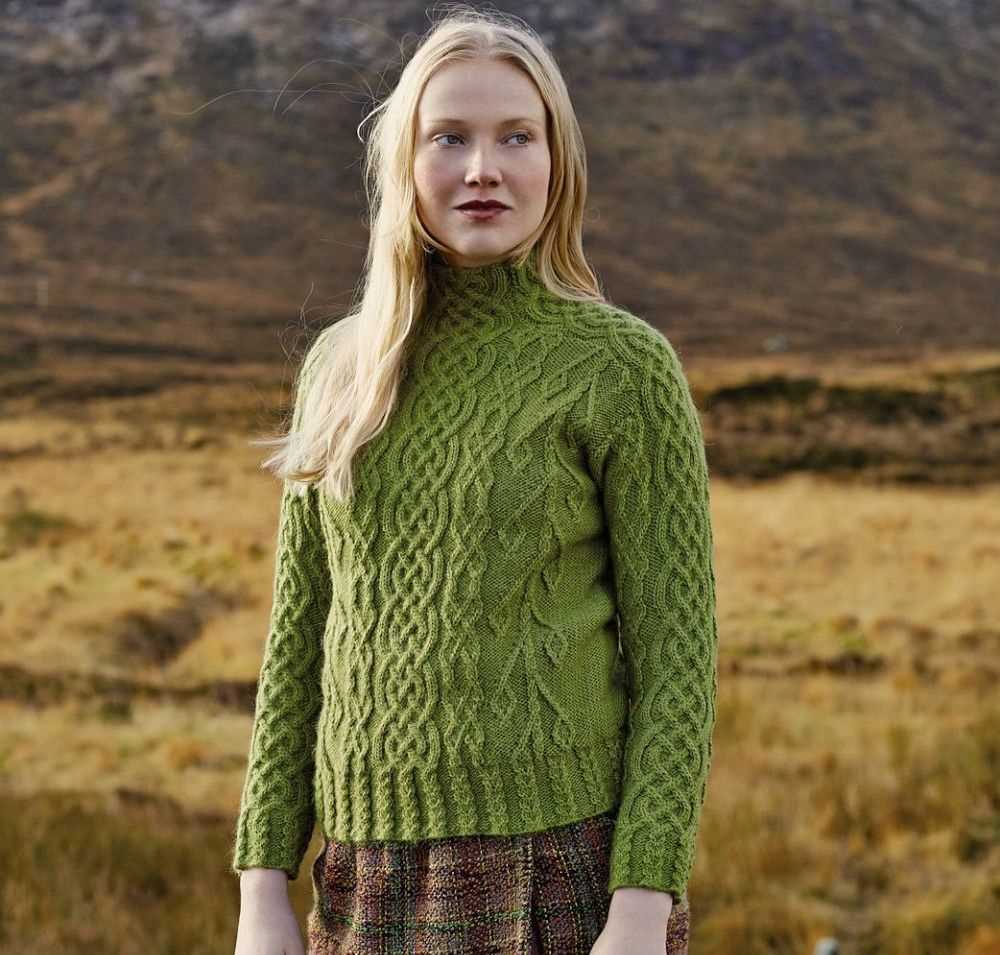
While Aran patterns are typically associated with cables and textures, there are also lace patterns that incorporate the distinctive Aran style. These lace patterns feature intricate openwork motifs that resemble traditional Aran stitches. Lace patterns add a delicate and feminine touch to knitted garments and are often used for shawls and lightweight sweaters.
In conclusion, Aran patterns offer a wide range of design possibilities, from intricate cable stitches to delicate lace motifs. Whether you prefer a cozy cable sweater or a lightweight lace shawl, there is an Aran pattern for every knitting project.
Best yarns for Aran style knitting
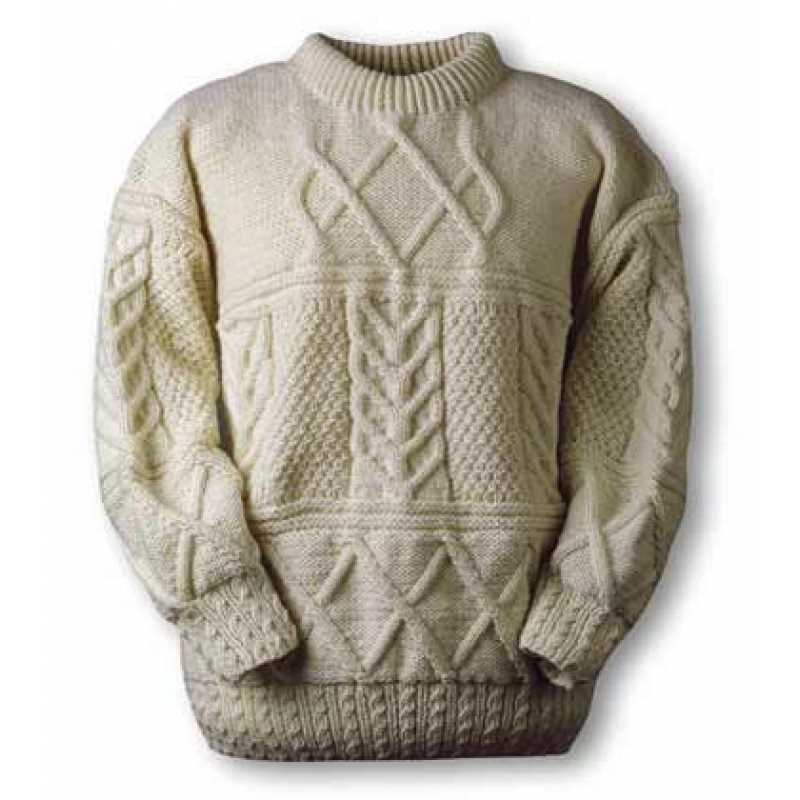
Aran style knitting is characterized by its intricate cable patterns and textured stitches. To achieve the desired results, it is essential to choose the right type of yarn that will enhance the beauty of the stitches and provide excellent stitch definition. Here are some of the best yarns for Aran style knitting:
1. 100% Merino Wool
Merino wool is a popular choice for Aran style knitting due to its softness, warmth, and ability to showcase intricate stitch patterns. It has excellent stitch definition and creates a beautiful drape. Merino wool is also known for its breathability and moisture-wicking properties, making it suitable for all seasons.
2. Alpaca Blend
An alpaca blend yarn is another excellent option for Aran style knitting. Alpaca fiber adds a luxurious touch to the project, providing warmth and softness. The blend of alpaca with other fibers like wool or acrylic can enhance the stitch definition while adding durability to the finished garment.
3. Cotton Blend
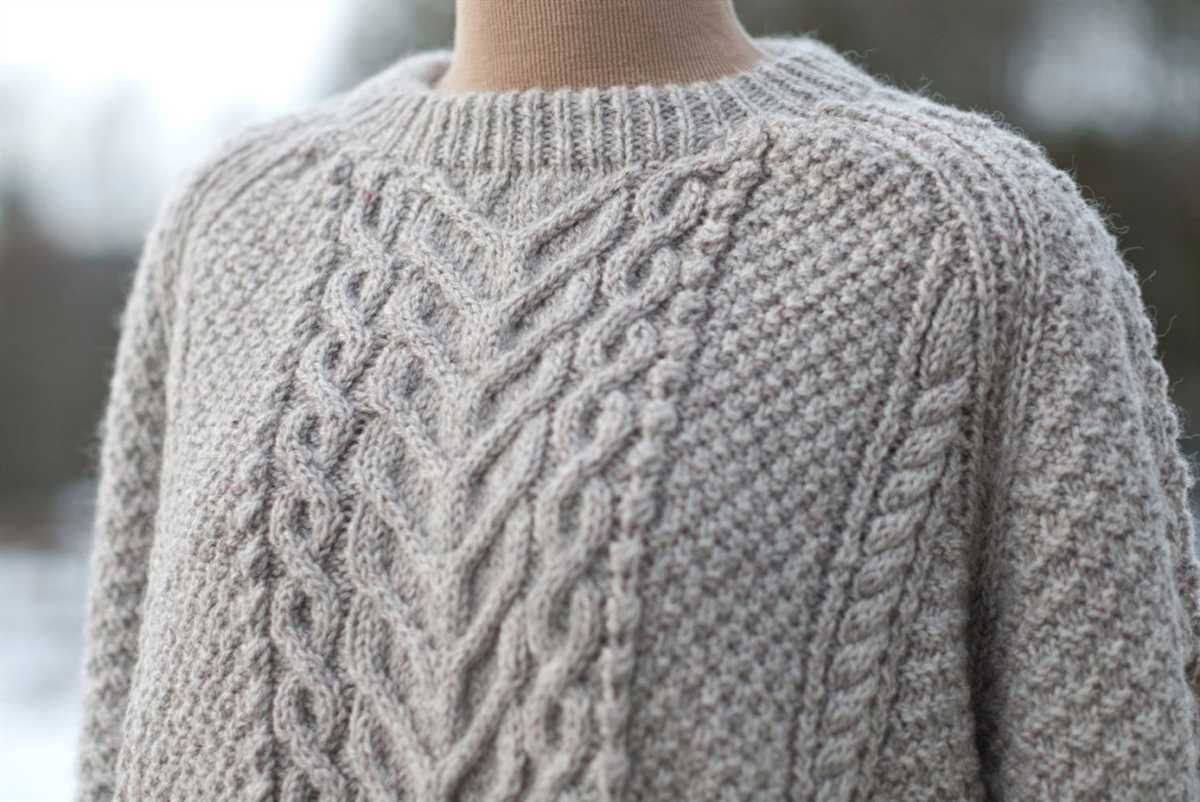
If you prefer a lighter yarn for Aran style knitting, a cotton blend can be a great choice. Cotton yarns are breathable, making them suitable for warmer climates or seasons. The blend of cotton with other fibers like acrylic or nylon can add elasticity and durability to the yarn, ensuring that your project will retain its shape well.
4. Cashmere
For a truly luxurious and indulgent Aran style knit, consider using cashmere yarn. Cashmere is known for its incredible softness and warmth, making it perfect for cozy sweaters or accessories. The delicate fibers of cashmere can showcase the intricate stitch patterns beautifully, creating an elegant and timeless garment.
- 5. Wool Blend
A wool blend yarn is a versatile option for Aran style knitting. Wool is known for its excellent stitch definition and elasticity, while the blend with other fibers like acrylic or nylon can add durability and softness. Choose a wool blend yarn that has a good twist and is suitable for the desired garment type.
In conclusion, selecting the right yarn for Aran style knitting is essential for achieving the desired results. Whether you prefer the softness of merino wool, the luxury of cashmere, or the versatility of a wool blend, there are many options available to enhance the beauty of your Aran-style project.
Essential knitting techniques for Aran patterns
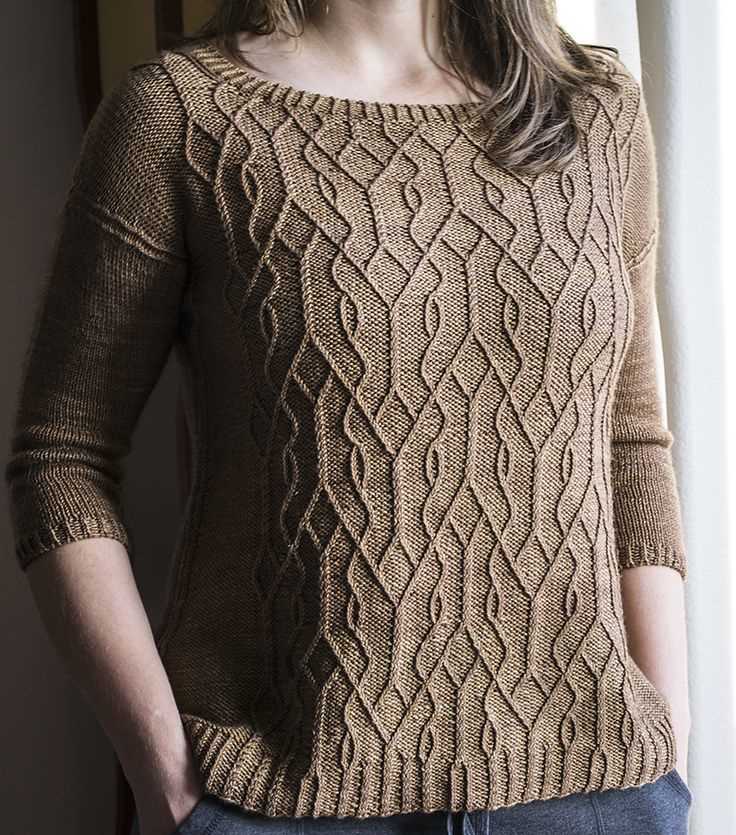
When it comes to knitting Aran patterns, there are several essential techniques that every knitter should be familiar with. These techniques not only add an intricate and beautiful texture to the finished garment, but also provide structural integrity and warmth.
Cabling: Cabling is the hallmark of Aran knitting patterns. It involves crossing stitches over each other to create twisted cables. This technique is achieved by using a cable needle or by knitting the stitches out of order. Cables can be simple two-stitch twists or more complex combinations, and they can be used in various configurations to create stunning designs.
Bobble Stitch: The bobble stitch is another key element of Aran patterns. It creates small, rounded bumps or balls of yarn on the fabric. This technique involves increasing and decreasing stitches within the same row to create the bobble effect. Bobbles can be made in different sizes and can be used to add texture and visual interest to a project.
Seed Stitch: The seed stitch is a popular stitch pattern often found in Aran knitting. It creates a textured fabric that resembles a field of scattered seeds. It is achieved by alternating knit and purl stitches within the same row and across consecutive rows. The seed stitch adds depth and dimension to a project and is often used for borders and edgings in Aran patterns.
Double Moss Stitch: The double moss stitch is another textured stitch pattern commonly used in Aran knitting. It creates a dense, richly textured fabric that resembles moss or small granules. It is achieved by alternating knit and purl stitches within the same row and across consecutive rows, but with a slight variation in the pattern. The double moss stitch adds warmth and visual interest to a project.
- Conclusion:
Mastering these essential knitting techniques is crucial for creating authentic Aran patterns. Whether you are knitting a sweater, hat, or scarf, incorporating these techniques will elevate your project to the next level. By experimenting with different stitch patterns and combinations, you can create unique and intricate designs that are characteristic of the Aran style. So pick up your needles, grab some Aran weight yarn, and start exploring the world of Aran knitting!
Tips for choosing the right Aran pattern for your project
When it comes to Aran style knitting patterns, there are a few factors to consider in order to choose the right one for your project. Whether you’re a beginner or an experienced knitter, these tips will help you make an informed decision.
1. Skill level:
Consider your skill level before selecting an Aran pattern. If you’re a beginner, it’s best to choose a pattern that is labeled as easy or beginner-friendly. These patterns typically have simpler stitch patterns and fewer intricate details. On the other hand, if you’re an experienced knitter looking for a challenge, opt for a pattern with more complex stitch patterns and design elements.
2. Project type:
Think about the type of project you want to knit. Aran patterns are available for various projects, including sweaters, hats, scarves, and blankets. Choose a pattern that suits the item you want to knit. Consider the size, style, and intended use of the finished product.
3. Design details:
Take a close look at the design details of the Aran pattern. Look for patterns with cables, braids, and other textured stitches that are characteristic of Aran knitting. Consider whether you prefer a more traditional or modern design, and choose a pattern that aligns with your aesthetic preferences.
4. Yarn weight:
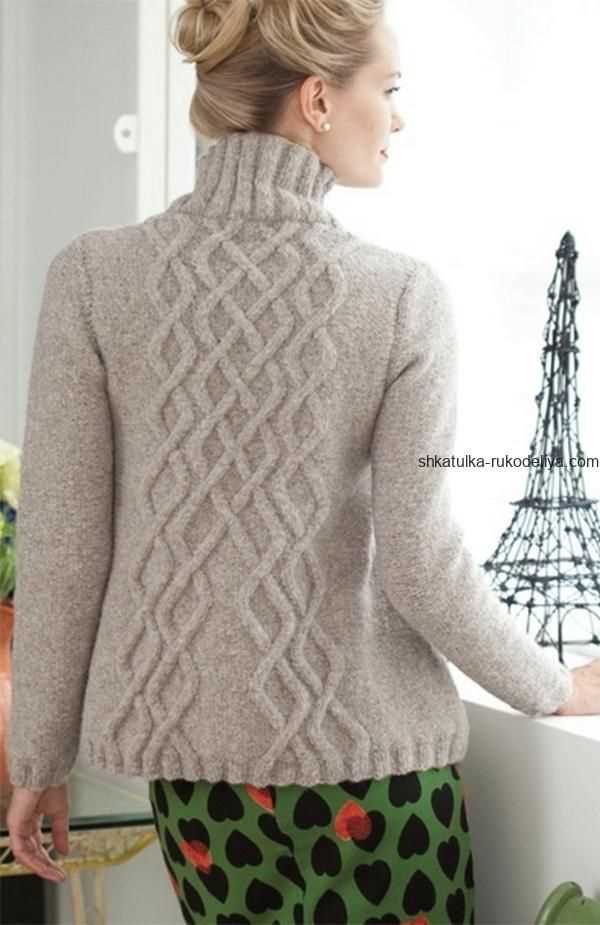
Pay attention to the recommended yarn weight for the Aran pattern. Some patterns may specify a particular weight of yarn, while others may provide a range of acceptable yarn weights. Make sure to choose a yarn that matches the pattern’s recommended weight to achieve the desired drape and finished look.
5. Sizing options:
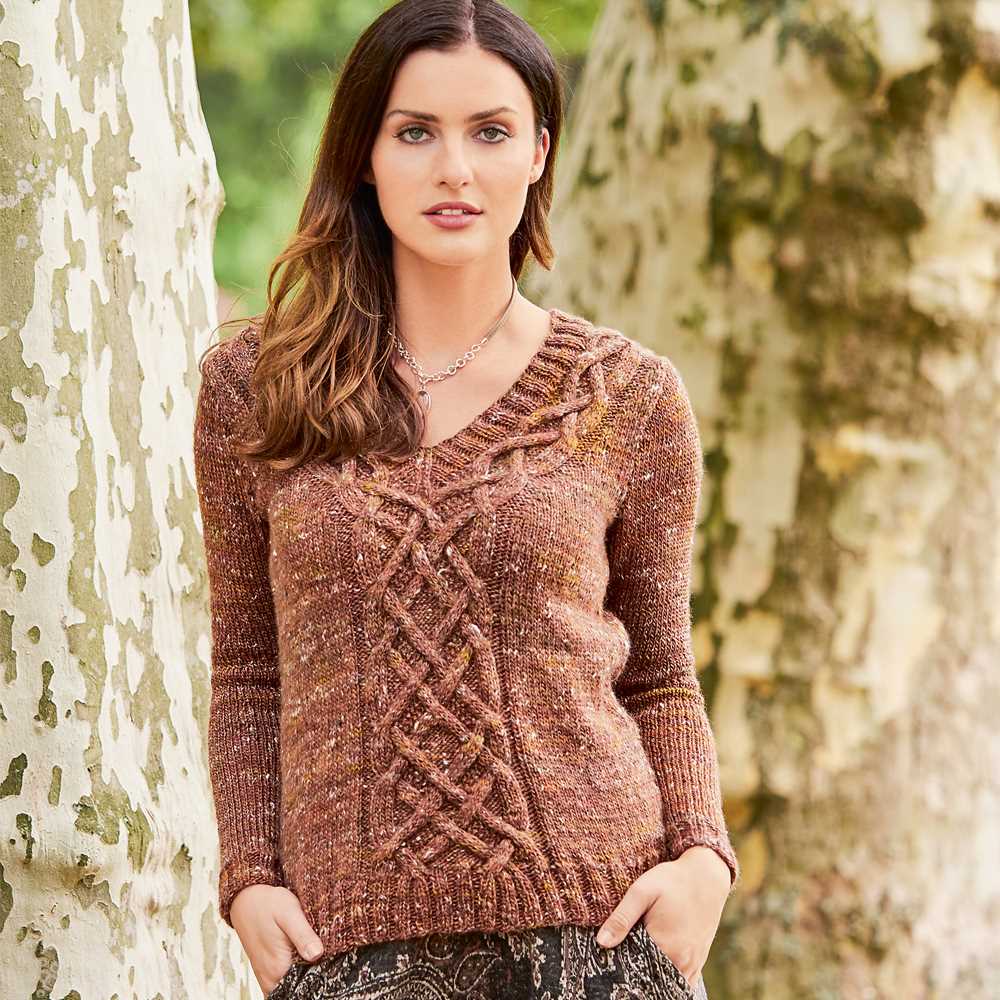
Check if the Aran pattern offers sizing options. Some patterns may provide instructions for multiple sizes, allowing you to customize the fit of your finished project. This is particularly important if you’re knitting a garment like a sweater or cardigan.
By considering these tips, you’ll be able to choose the right Aran pattern that matches your skill level, project type, design preferences, and yarn choices. Happy knitting!
How to read Aran knitting charts
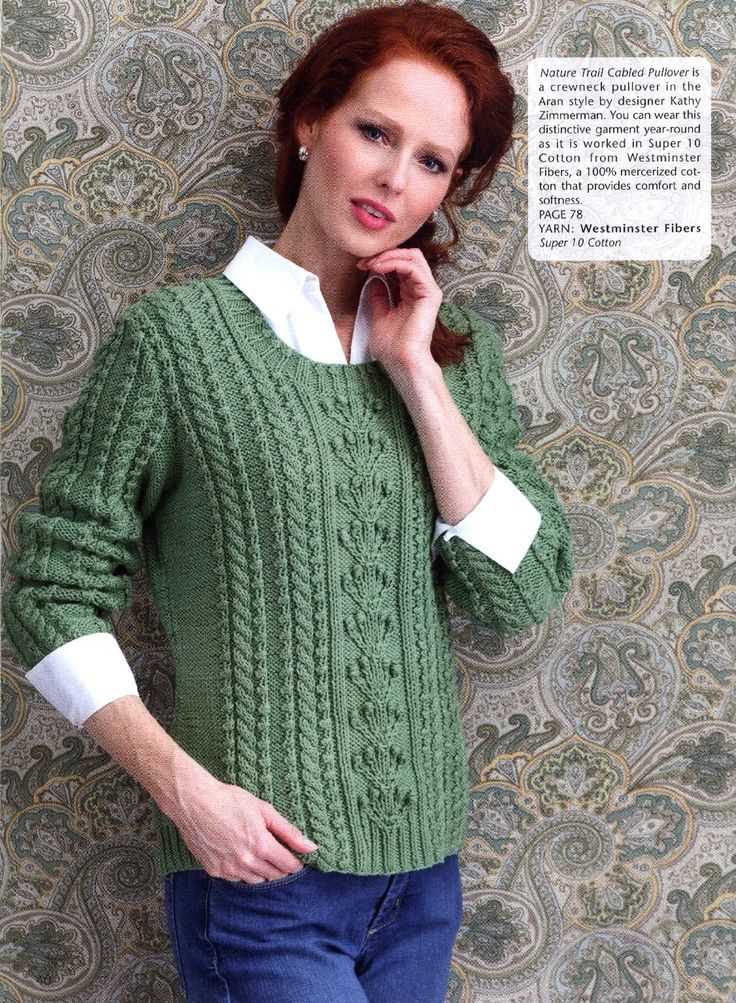
Aran knitting charts are a visual representation of the stitch patterns used in Aran style knitting. They are a valuable tool for knitters, as they allow them to easily follow the complex designs and patterns often found in Aran knitting. Here are some key tips on how to read Aran knitting charts:
1. Understand the symbols
In order to read Aran knitting charts, it is important to familiarize yourself with the symbols used in the charts. Each symbol represents a specific stitch or action, such as knitting, purling, or cabling. Look for a key or legend that explains the symbols used in the chart, and study it carefully before starting your project.
2. Read the chart from right to left
Aran knitting charts are read from right to left, just like knitting itself. Each row of the chart represents a single row of knitting, and you should start at the right side of the chart and work your way to the left. Pay attention to any repeats or repetitions indicated in the chart, as these will affect how the stitch pattern is repeated across the row.
3. Track your progress
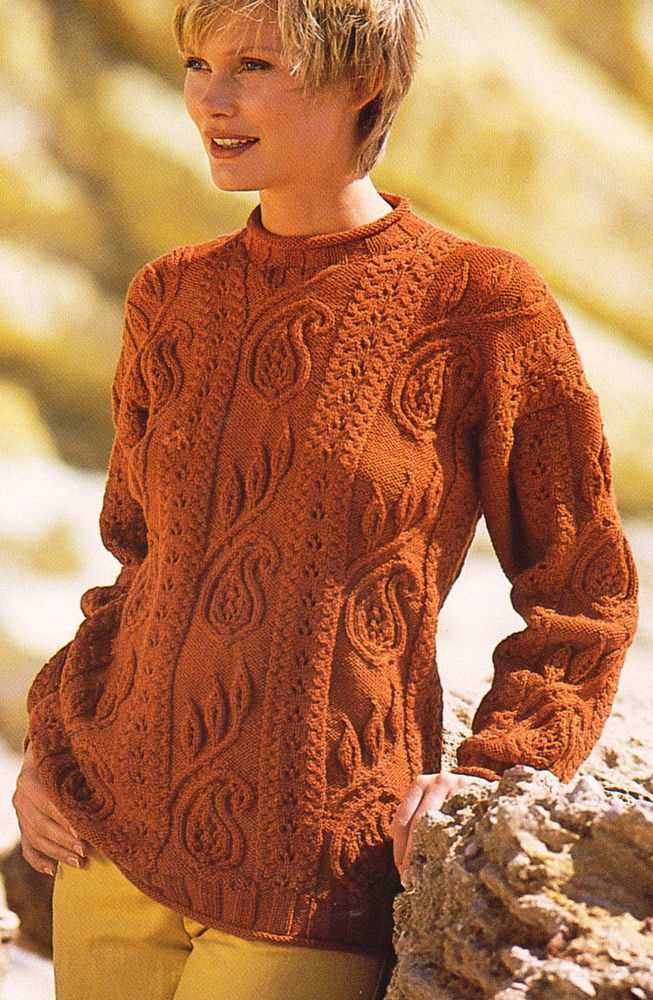
As you work through the Aran knitting chart, it can be helpful to use a row counter or highlighter to keep track of the rows you have completed. This will help you stay organized and avoid making mistakes or getting lost in the chart. You can also use stitch markers or a piece of string to mark your place in the chart and ensure you are following the correct row.
4. Practice with simpler charts first
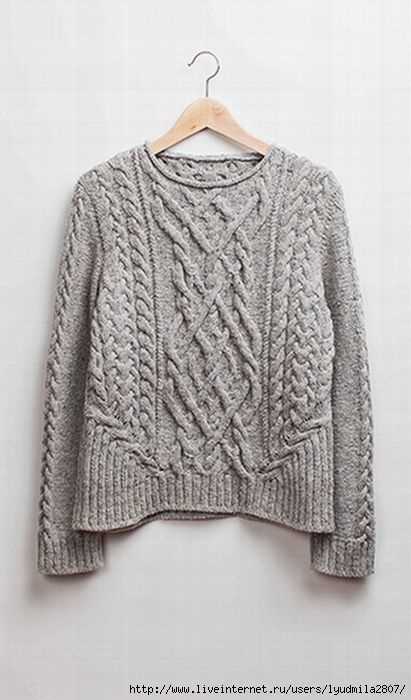
If you are new to Aran knitting charts, it can be helpful to start with simpler patterns and charts before attempting more complex designs. This will allow you to build your skills and confidence with reading charts before taking on more challenging projects. Look for beginner-friendly Aran knitting patterns that include detailed instructions and clear charts to help you get started.
By following these tips and practicing regularly, you can become confident in reading and following Aran knitting charts. With time and patience, you will be able to create beautiful Aran style knitted items.
Frequently asked questions about Aran style knitting
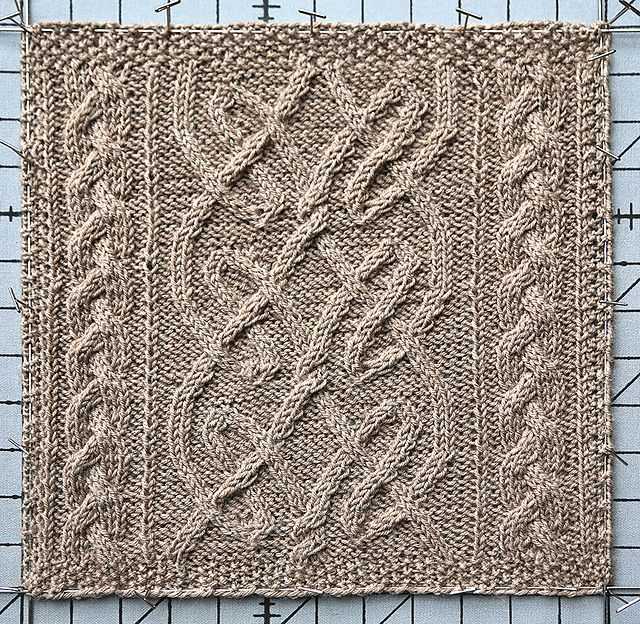
Are Aran style knitting patterns only for experienced knitters?
No, Aran style knitting patterns can be suitable for both beginners and experienced knitters. While some patterns may require more advanced techniques, there are many simpler patterns available that are perfect for beginners who want to try their hand at Aran style knitting.
What types of projects can I make using Aran style knitting patterns?
Aran style knitting patterns can be used to create a variety of projects, including sweaters, hats, scarves, blankets, and even socks. The intricate designs and textured stitches of Aran knitting lend themselves well to creating warm and cozy garments and accessories.
What materials do I need to start knitting in the Aran style?
To start knitting in the Aran style, you will need a set of knitting needles, yarn in your desired color and weight, stitch markers, a tapestry needle, and any additional accessories or embellishments specified in your chosen pattern. It is also helpful to have a basic understanding of knitting terminology and techniques.
How long does it take to complete an Aran style knitting project?
The time it takes to complete an Aran style knitting project can vary depending on the complexity of the pattern, the size of the project, and the individual knitter’s speed and experience. Some smaller projects like hats or scarves can be completed in a few days, while larger and more intricate projects like sweaters or blankets may take several weeks or months to finish.
Can I modify Aran style knitting patterns to fit my own style or preferences?
Yes, you can definitely modify Aran style knitting patterns to fit your own style or preferences. Many patterns include suggestions for customization, such as changing the length or width of a garment, adding or omitting certain stitches, or incorporating different colors or stitch patterns. Feel free to experiment and make the pattern your own!
Aran Knitting Patterns for Beginners
Aran knitting patterns are known for their intricate cables, textured stitches, and rich history in Irish knitting. While they may seem intimidating for beginners, there are many beginner-friendly Aran knitting patterns available that can help aspiring knitters learn and master this beautiful technique.
A great place to start for beginners is with a simple Aran headband pattern. This stylish accessory only requires basic knitting skills and introduces knitters to the cable stitch, a hallmark of Aran knitting. With just a few cables and some ribbing, beginners can create a cozy and fashionable headband that showcases the beauty of Aran knitting.
Another option for beginners is an Aran hat pattern. This project typically incorporates a combination of stitches, such as cables, bobbles, and seed stitch, allowing beginners to practice a variety of techniques. With the right pattern and guidance, beginners can create a timeless and cozy hat that will not only keep them warm but also showcase their newly acquired Aran knitting skills.
For those looking to take their knitting skills a step further, an Aran sweater pattern is a great choice. While it may require more time and effort, knitting an Aran sweater is a rewarding project that allows beginners to practice and refine their cabling techniques. With a simple, easy-to-follow pattern, beginners can create a classic and cozy sweater that will be cherished for years to come.
Tips for Beginners:
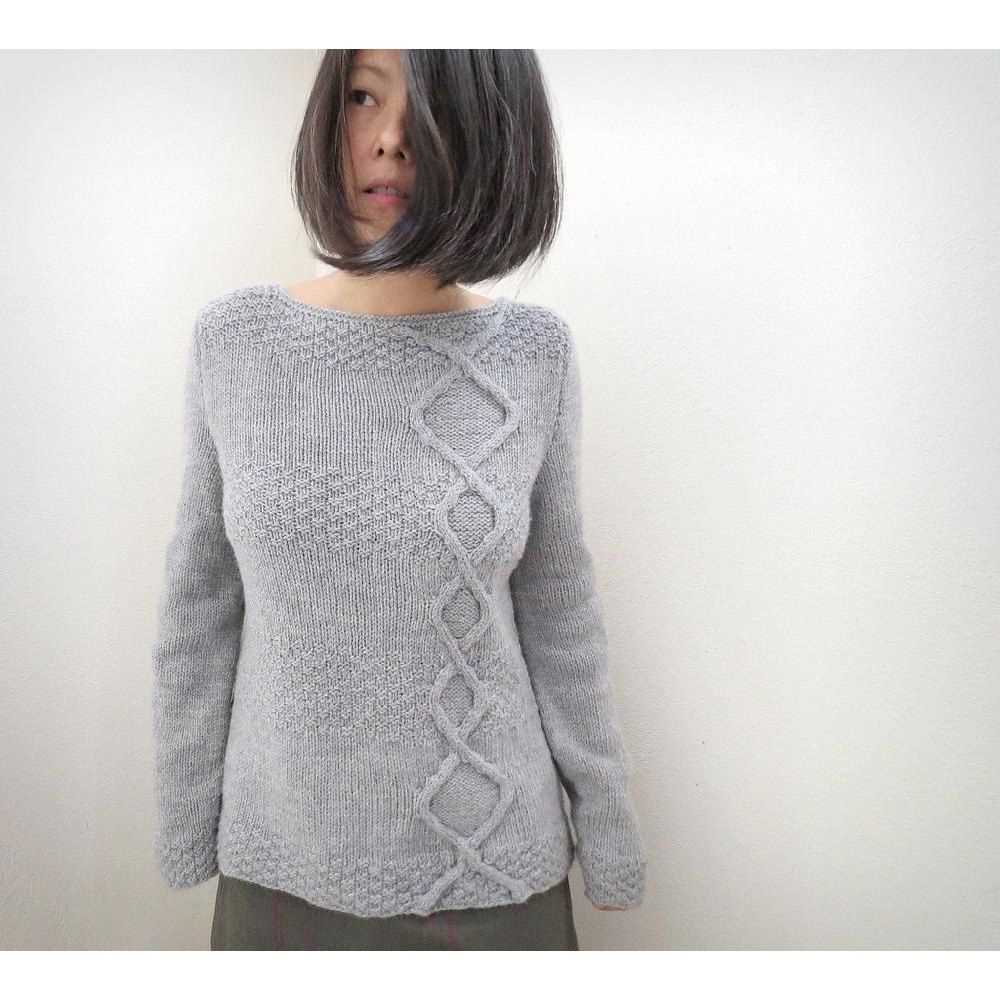
- Start with small Aran knitting projects, such as headbands or hats, to familiarize yourself with the stitches and techniques.
- Choose a beginner-friendly Aran knitting pattern that includes detailed instructions and clear diagrams.
- Take your time and practice each stitch before moving on to the next one.
- Don’t get discouraged if your first project doesn’t turn out perfectly. Knitting takes time and practice!
- Join a knitting community or take a class to learn from experienced knitters and get additional guidance and support.
Intermediate Aran knitting patterns
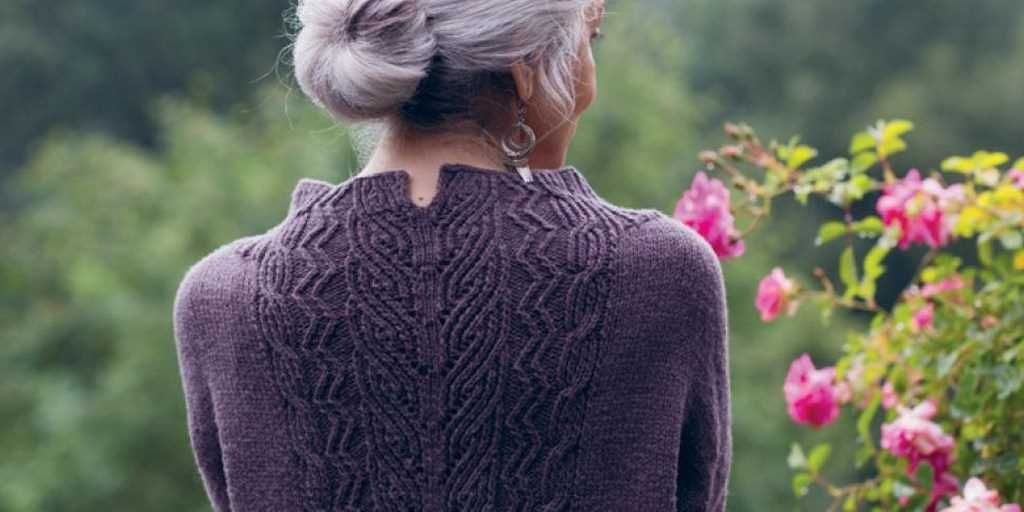
Intermediate Aran knitting patterns are perfect for knitters who have mastered the basic Aran stitches and are ready for a more challenging project. These patterns often feature intricate cable designs, textured stitches, and more complex shaping techniques. They offer an opportunity to expand your knitting skills and create beautiful, heirloom-quality garments and accessories.
One popular intermediate Aran knitting pattern is the cable cardigan. This pattern typically includes a variety of cable designs, such as honeycomb, braided, and horseshoe cables. Knitters will need to be familiar with cable knitting techniques, such as knitting through the back loop and cabling without a cable needle. The cardigan may also include shaping for a flattering fit, such as waist shaping or set-in sleeves.
Another intermediate Aran knitting pattern is the cable hat. This pattern allows knitters to practice their cable knitting skills on a smaller scale. The hat may feature traditional Aran cable motifs or more unique cable patterns. Knitters will need to be comfortable working in the round and may need to use double-pointed needles or magic loop techniques. The cable hat is a great project for mastering cable stitch techniques before tackling a larger garment.
For those who love cozy accessories, an intermediate Aran knitting pattern for fingerless gloves is a great choice. These gloves often feature cables along the back of the hand and ribbing at the cuffs. Knitters will need to be comfortable working with multiple cable patterns and may need to use techniques such as picking up stitches for the thumb opening. Fingerless gloves are a practical and stylish project to showcase your intermediate knitting skills.
Overall, intermediate Aran knitting patterns offer an exciting challenge for experienced knitters looking to expand their skills. Whether you choose to knit a cable cardigan, hat, or gloves, these patterns allow you to create gorgeous, textured pieces that will be treasured for years to come.
Advanced Aran Knitting Patterns for Experienced Knitters
If you have mastered the basics of Aran knitting and are ready for a challenge, try these advanced Aran knitting patterns. These patterns incorporate intricate stitch patterns and more complex techniques to create stunning and unique designs.
When attempting advanced Aran patterns, it is important to have a solid understanding of cable knitting and be comfortable working with multiple cables in a single row. It is also helpful to have experience with lace knitting, as some of the advanced patterns may incorporate lace elements.
1. Celtic Cables Sweater
This pattern features an intricate Celtic cable design that creates an interwoven pattern reminiscent of traditional Celtic art. The sweater is worked in the round and includes intricate stitch variations and shaping techniques. The end result is a stunning and eye-catching sweater that is sure to impress.
2. Diamond Lace Hat
This pattern combines the complexity of lace knitting with the texture of Aran cables. The hat features a central diamond lace motif surrounded by cables, creating a beautiful and unique design. The pattern includes both written instructions and charts, allowing you to choose your preferred method of following the pattern.
3. Honeycomb Blanket
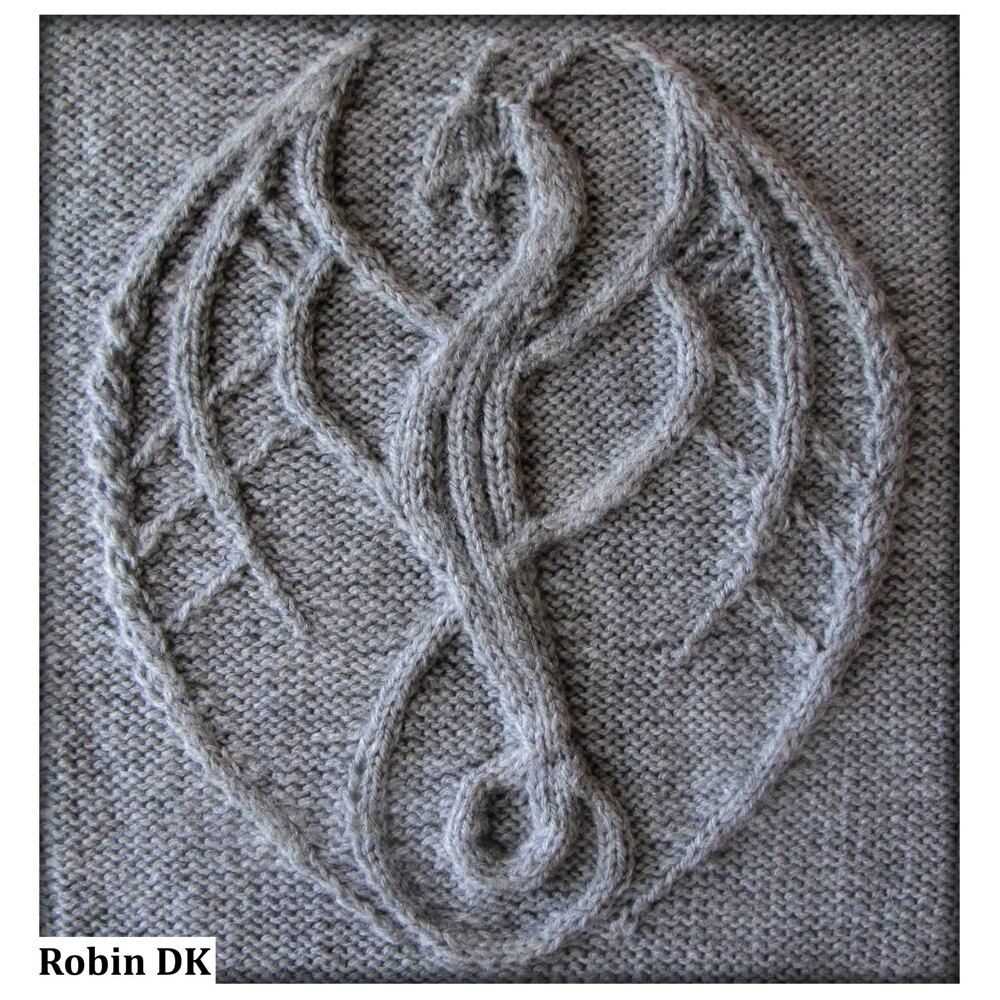
This blanket pattern is perfect for showcasing the versatility of Aran knitting. The honeycomb stitch pattern creates a cozy and textured fabric that is both warm and visually appealing. The pattern includes instructions for adapting the size of the blanket to fit your needs, making it a customizable project for experienced knitters.
These advanced Aran knitting patterns will challenge even the most experienced knitters and allow you to create truly unique and intricate designs. Whether you choose to tackle a Celtic cable sweater, a diamond lace hat, or a honeycomb blanket, you are sure to be rewarded with a beautiful finished project that showcases your skills and creativity. Happy knitting!
Q&A:
What is Aran style knitting?
Aran style knitting is a traditional style of knitting that originated in the Aran Islands of Ireland. It is characterized by intricate cable and texture patterns, usually knit with natural, creamy-colored wool.
Are Aran style knitting patterns difficult?
Aran style knitting patterns can be challenging for beginners due to the complexity of the cable and texture designs. However, with practice and patience, anyone can learn and master this style of knitting.
What kind of projects can I make with Aran style knitting patterns?
You can make a variety of projects with Aran style knitting patterns, including sweaters, cardigans, hats, scarves, blankets, and even socks. The intricate designs add a beautiful touch to any garment or accessory.
Where can I find Aran style knitting patterns?
You can find Aran style knitting patterns in various knitting books, magazines, and knitting websites. Additionally, many knitting designers create and sell their own Aran style patterns online.
Can Aran style knitting patterns be customized?
Yes, Aran style knitting patterns can be customized to fit your preferences. You can modify the size, length, and even the cable patterns to create a unique and personalized garment or accessory.
What is Aran style knitting patterns?
Aran style knitting patterns are a traditional style of knitting that originated in the Aran Islands of Ireland. They typically feature intricate cable stitch patterns and are known for their rich texture and warmth. The patterns often incorporate symbolism, with different stitches representing different aspects of Irish culture and history.
Can beginners knit Aran style patterns?
While Aran style knitting patterns can be more challenging than basic knitting patterns, beginners can certainly give them a try. It’s recommended for beginners to start with simpler Aran patterns that have fewer and/or simpler cable stitches. As with any knitting project, practice and patience are key, and it’s always helpful to have a knitting tutorial or guide to follow.